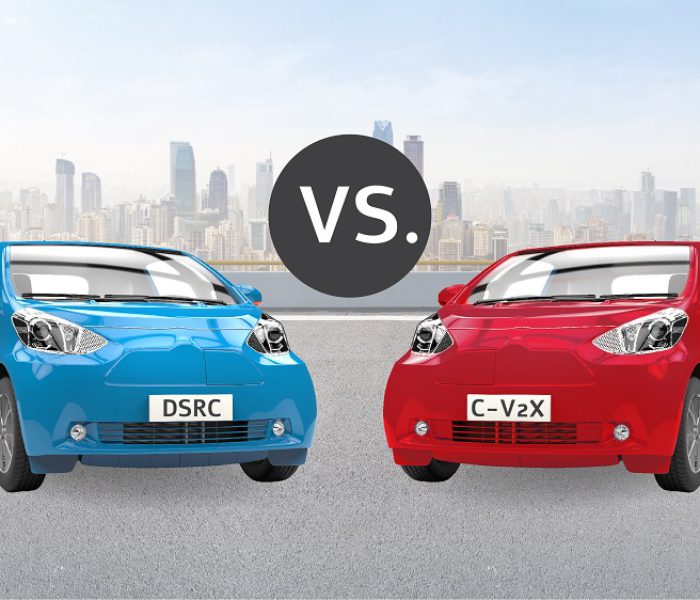Global Solution
One Global V2X Solution: Concurrent DSRC and C-V2X
Why develop a solution per geography?

Divergence of V2X standards requires a global solution
V2X diverged into two different standards: DSRC, with a large install base in Europe, and C-V2X, selected in China and the US, with fundamentally different architectures. This makes it difficult for OEMs to harmonize a single global solution.
Our chips speak all languages: DSRC or C-V2X
We decided to resolve the issue of the two competing V2X standards and design one global solution: the world’s first dual mode chipset. With our global V2X solution, OEMs no longer need to develop a solution per geography.
Next Generation V2X
Both DSRC and C-V2X evolved into their next generation standards, IEEE802.11bd and 5G-V2X, respectively. Qualcomm® V2X 350 chip and V2X 300 chip support the new standards.
Global V2X chipset: automotive qualified with global security
We deliver dual-mode (DSRC and C-V2X) functionality on its automotive qualified AEC-Q100 grade 2 chipsets. All global security standards (US, China and Germany) are supported.
The solution is not dependent on any cellular network
Our global V2X solution does not need a cellular connect to work. There are many clear advantages to the separation from the cellular network both to the OEM and the consumer.
Benefits to the Consumer:
Benefits to OEMs:
Separation between Safety Messages and Infotainment
In order to ensure that V2X is reliable and secure for usage by ADAS, V2X must be separated from the cellular network.
Open ecosystem and lowest development cost:
One global V2X platform and flexibility in setting all system components.
Relevant Links:




